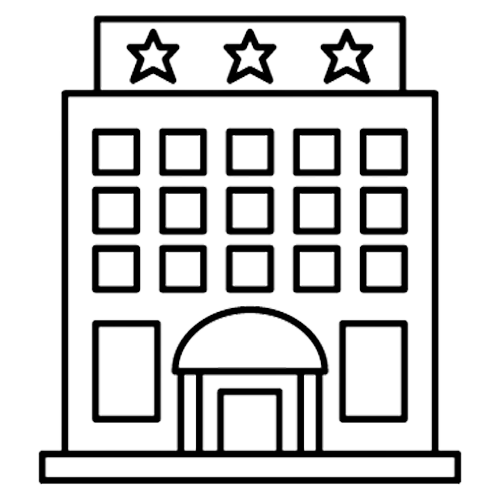In order to preserve the landscape of the Nemunas Delta region, its natural ecosystem and cultural heritage values, the Nemunas Delta Regional Park was established in 1992, and its landscape is particularly rich. The park’s territory includes the shallow bays of the Curonian Lagoon, the entire Nemunas Delta river and stream system, the old lakes (grasshoppers), the Krokų lanka lake, the floodplain meadows of the lower Nemunas River, and the region’s largest polder system. The Aukštumala raised bog and other wetlands, the largest Rusnė Island in Lithuania (46 km) and the Vente Cape peninsula.
LANDSCAPE
The Nemunas delta starts 48 km from its mouth (below Tilžė), where the Nemunas branches into the Rusnė and Gilija branches. The Rusne branches into the Atmata and the Skirvytė 13 km from its mouth (at Rusne Island). The plain of the Nemunas delta is still bordered by the branches of the Nemunas and by the deltas of the Minija, Šyša, Tenenis, Leite and other rivers adjacent to the Nemunas delta. As the sediments in the mouth of the Nemunas continue to accumulate, the Nemunas delta is gradually widening and moving towards the Curonian Lagoon.
The landscape and biodiversity of the delta rivers (Minija, Atmata, Skirvytė, Rusnė, etc.) can be explored by boat from Šilutė, Rusnė, Minija or Ventė.
A lookout tower is located on the western shore of the lake (on the road to the village of Minija (Mingė)), from which visitors can observe the landscape of this unique lake in Lithuania, as well as the rich birdlife.
The Nemunas Delta is one of the few places in Lithuania and Europe where large swamp deciduous forests – habitats of European importance – can still be seen, which are constantly flooded. The forest and wetland complexes are home to many rare bird species protected in Lithuania and the European Union (black stork, golden eagle, whooping crane, great spotted owl, etc.). In the meadows near Žalgiriai forest, one of the most important breeding sites of the Eurasian starling (a globally threatened species) in Lithuania has been found.
The flooded area covers an area of approximately 400 km². The Pomeranian region is characterised by spring and autumn-winter floods. Flooding usually occurs in spring, when the Nemunas River flows out of its shores. Spring flooding in the lower Nemunas River starts in late March and reaches its maximum level 6-8 days after the river flows out of its channel. Spilled water and ice break down embankments, flood settlements, disrupt roads and embankments, and litter fertile land. Every year, floods cause significant damage. During major floods, more than 1 500 people are flooded, and the flood reaches the outskirts of Šilutė.
FLORA AND FAUNA
The Nemunas delta and its surrounding areas are characterised by a great diversity of habitats and flora and fauna. More than 600 species of flowering plants have been recorded in the Regional Park, including 25 rare and endangered species listed in the Lithuanian Red Data Book. The Nemunas delta is home to the very rare and endangered water flamingo. The wet meadows and sandy beaches surrounding the delta are particularly valuable for species found only in the Pomeranian region: the salt caterpillar, the seaside sotvar, the seaside reed-grass and others. More than 20 habitat types of European importance have been identified in the Delta (estuaries, mudflats, lagoons, sandbanks, seasonal flood meadows and forests, swamp deciduous forests, raised bogs, intermediate marshes, etc.).
Among the many invertebrate species living in the delta, rare molluscs and insect species listed in the Lithuanian Red Data Book (the oval pipistrelle, the great king dragonfly, Green dragonfly, Green dragonfly, Yellow-legged dragonfly, Armadillo, Brass-headed dragonfly, Pallas’s dragonfly, Machaon, Blood-eyed blue, Meadow satyr, etc. ).
About 50 species of fish can be found in the waters of the Nemunas Delta. The Nemunas Delta and the adjacent Curonian Lagoon are home to several rare fish species listed in the Lithuanian Red Data Book: the sea lamprey, salmon and wrasse. The waters of the Nemunas Delta are also home to several rare fish species in Europe: the river lamprey and the small lamprey, the salmon, the goatfish, the goatfish, the cartouche, the perpele and the catfish. The Lower Nemunas River is the most important migratory route in Lithuania for many migratory fish species (lamprey, salmon, bream, goby, tern, sturgeon, etc.). The Delta is a spawning ground for smelt, sturgeon, catfish and bream. Pike, sturgeon, bream, pikeperch, bream and chub spawn in the Delta’s old and old estuaries and in lakes with tidal waters. The Nemunas Delta has always been known as a fishermen’s area. It is one of the most fishy places in the Baltic region. Amateur fishing is allowed in the Nemunas Delta Regional Park in accordance with the rules of amateur fishing. During the spawning season, only sturgeon migrating from the Curonian Lagoon to the rivers may be caught. Ice fishing for sturgeon in the Curonian Lagoon is extremely popular and attracts thousands of amateur fishermen every year.
The Delta’s marshes and waters are home to a wide variety of amphibians and reptiles, including the red-bellied hammerhead shrew and the reed toad, both rare and protected in Lithuania. The common snakehead can be seen in many areas of the Delta, and the common viper, commonly known as the snakehead, is common in the margins.
The Nemunas Delta Regional Park is home to 50 species of mammals, 14 of which are listed in the Lithuanian Red Data Book. Several species of bats, rare in Europe, are found in the area; birch tits and marmots live in the forests, and otters live in streams and lakes. In many parts of the delta, you can see beaver dens, which are very abundant here. The forests and wetlands of the Delta are the most important refuge for elk in the Lithuanian Maritime Region. The entire Nemunas Delta (including the Russian part of the Delta) is home to several wolf families.
But the Nemunas Delta is best known as a bird kingdom.
More than 300 bird species have been recorded in the Nemunas Delta. Around 180 bird species breed here. The delta and the surrounding flooded meadows, marshes and wet forests are the most important breeding sites for many rare and endangered bird species in Lithuania. The 58 bird species breeding in the Nemunas Delta Regional Park are listed in the Lithuanian Red Data Book and 54 species are included in the list of the most protected birds in European Union countries. This unique natural area is home to globally threatened species of waterfowl and wetland birds, such as the Eurasian warbler, the Eurasian warbler, and the brown warbler, which has been found during breeding. The Nemunas Delta is the most important breeding ground for many rare bird species in Lithuania (black-necked crab, great bustard, greylag goose, cave duck, spoon-billed duck, sea eagle, osprey, osprey, sea bream, lapwing, black-breasted chat, little tern, black tern, great skua, moustachioed kingfisher, and others).
The Nemunas Delta Regional Park is one of Europe’s most important sites for migratory waterbirds.
This unique area is home to the internationally important migratory migratory eared grebes, great white herons, song swans, little swans, white-crowned godwits, greylag, white-fronted and greylag and greylag geese, and cypress, resting and feeding areas for grey, pintail, spoon-billed, brown-headed and tufted ducks, waders, great and lesser black-backed gulls, common and lesser spotted gulls, terns, cranes, little gulls, black terns, and other waterbirds.
The floodplain meadows of the Regional Park are one of the most important resting places for the songbirds, which are a major European attraction. Every year between March and April, up to 4,000 of Europe’s tundra-breeding swans congregate there, and the “trumpeting” of their cries can be heard in many parts of the Delta. The wet meadows surrounding the Delta are one of Europe’s most important resting places for white-fronted and greylag geese. During high spring tides, huge flocks of White-fronted Geese can be seen there, stopping off on their way to breeding grounds on the Arctic tundra, where up to 100,000 birds have been counted. During the spring migration in the Delta, the largest flocks of brown-headed and striped guillemots, waders, pintails, pintails, mallards, grey ducks and pochards are regularly recorded in Lithuania.
The shallows, sandy islands and surrounding wet meadows of the Delta are among the most important resting places for migratory passerines in the Baltic region. In recent years, very large flocks of pampas (up to 11,000 birds), guillemots (up to 8,000), black-breasted stilts (up to 500) and other seabirds have been observed there.
In late summer (July-August), flocks of Black Terns can be observed in the Delta. This is the only place in Lithuania where up to 15,000 of these rare birds gather each year.
The Nemunas Delta is one of the most important resting places in Europe for migratory brown-headed and tufted ducks. In recent years, around 40,000 brownheaded ducks and up to 50,000 mallards have been observed there during the autumn migration.
In 1993, the Nemunas Delta Regional Park was recognised as a Site of International Importance for Migratory Birds under the Ramsar Convention criteria, and in 2004 as a Site of International Importance for Migratory Birds. The park is a site of the European Union’s Natura 2000 network (which includes EU protected natural areas).
The largest conservation programme of the United Nations Environment Programme and other international environmental organisations for waterbirds and their key habitats, “Wings over Waters”, is being implemented in the Nemunas Delta Regional Park. The aim of the programme is to conserve the most important wintering and resting sites for migratory waterbirds along their migration route in the Western Palearctic (including the Nemunas Delta).
In spring, huge flocks of migratory waterbirds attract observers. The largest flocks of migrating swans, geese and ducks in the Nemunas Delta in March – April can be observed in flooded meadows in the Rupkalviai and Žalgiri Ornithological Reserves (near the road Šilutė – Rusnė), in the Sausgalviai Ornithological Reserve (near the village of Sausgalviai), in the southern part of the island of Rusnė, in the Minijos Senvagės botanical-zoological reserve and in other parts of the Delta.
In August-October, large flocks of migratory waterbirds can be observed in the Kintai fish ponds, from the viewpoints and observation towers set up for birdwatchers at the Krokų Lanka Lake, Ventė Raga and Rusnė Island, and on the Aukštumala and Pakalnė Nature Trails. However, the greatest diversity of winged birds can be seen by boat at Kniaupas Bay and Krokų Lanka Lake, and in the sand islands that have formed at the mouth of the Atmata River.
In October, birdwatchers are invited to the annual birdwatching event in the Pamari region, which takes place every year, and to the traditional “Bird Rally” (birdwatching competition for amateurs and professionals).
Visitors are invited to get acquainted with bird migration at the Ventė Rags Ornithological Station of the Tadas Ivanauskas Zoological Museum. The Ornithological Station has a small museum where you can learn about the history of bird ringing, bird migration studies and the unique world of the winged birds of the Nemunas Delta. Ventė Ragas is a very important place for migratory birds. Sometimes up to 300,000 birds pass through Vente Ragas every day. In 1929, Prof. T. Ivanauskas established the Ventė Horn bird ringing station. This station is one of the oldest in the world. In recent decades, the ornithological station has been equipped with the world’s largest bird traps (60 m wide and 25 m high) and modern zigzag traps. These traps were designed by Leonas Jezerskas, a long-time director of the ornithological station. Since its establishment, the Ventė Rags Ornithological Station has seen a total of about 2 million bird sightings of 226 species. More than 95% of all ringed birds were small passerines (starlings, great tits, swallows, etc.). In recent years, about 300-400 reports of birds ringed at the Station have been received annually from various countries in Europe, Asia and Africa.
Information from the Nemunas Delta Regional Park
More information www.nemunodelta.lt, www.saugoma.lt





































